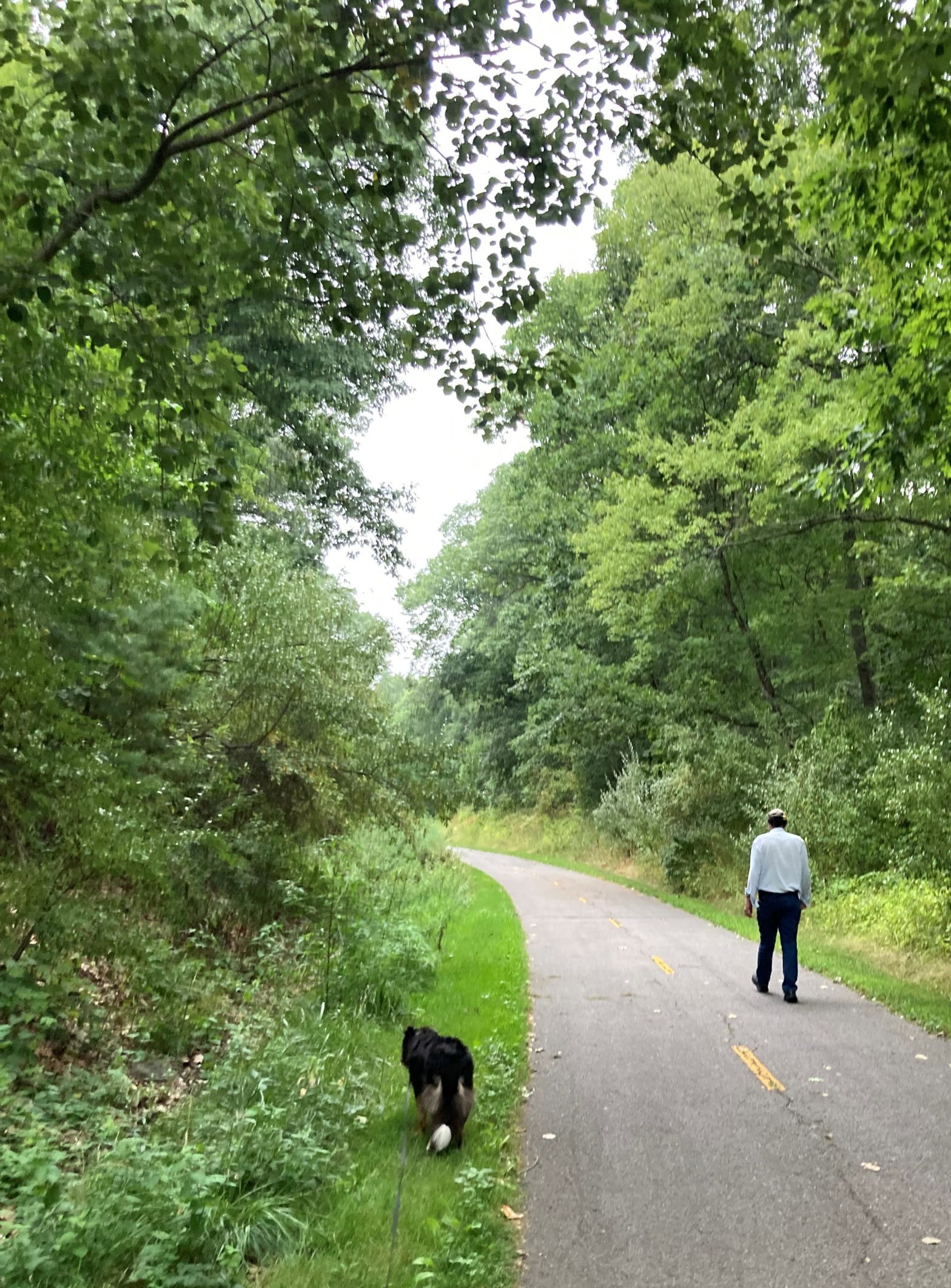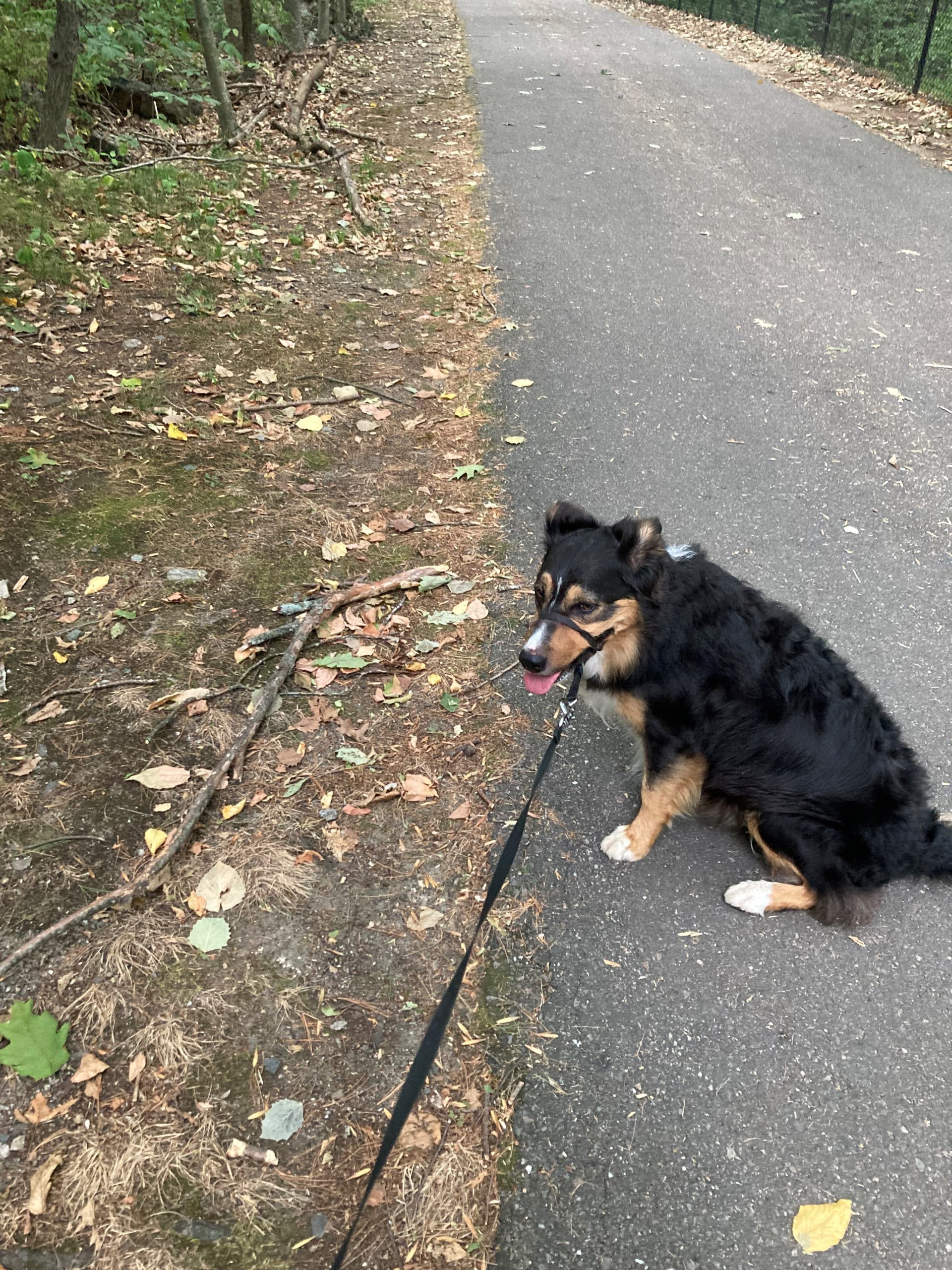Dark green is my favorite color. It’s the color of nature, the color of money and the color of moss!
-Leonardo DiCaprio
It’s a little bit cooler when Waldo and I start out today, so we leave a little after sunrise, around 6 AM. It’s still going to be too hot to walk comfortably after 10 AM, but we have plenty of time to do our morning constitutional and still beat the heat. The sun is up and the light that penetrates the long forest shadows has lost its golden hue, but the glaring burn of late morning is yet to come. There’s a slight breeze that adds to the sensation of cool and rattles the leaves of the quaking aspens. It’s nice, but it does lack the early predawn magic of a walk in the woods before sun-up. On the other hand, Waldo and I did get to sleep in a little longer.
All this nuance seems to be lost on Waldo. His tail is up and wagging as he explores the bushes next to the trail – stick in mouth, of course. He loves being out here, romping in the wild. The heat doesn’t really deter him from attempting to cavort, either – it’s just that it isn’t long before he becomes overheated. Today, that’s not a problem and he’s off entertaining himself, leaving me to my own devices for amusement. I decide that I’m going to engage with nature by paying attention to whatever mosses I can find. I’ve seen them alongside the trail before, but I pretty much ignore them. Today, I’m going to fix that. It’ll help me be more aware of the wonderful world around me.
Mosses are a group of plants that were one of the first to evolve to be able to live on land. To do that, they had to developed new ways to breathe, preserve moisture and reproduce. Those developments are what distinguish them, and all plants, from algae. As a plant, though, they are diminutive and rudimentary. They don’t have real roots, leaves or vascular tissue. This means they like to live in shadowy, wet, cool places that other plants are less eager to inhabit. On the rail-trail, this means places that have lots of thick shade. The trail used to be a railroad bed and has drainage on either side that provides plenty of water, but most places have more sun than mosses like and are heavily populated by other phylae of plants, like grass, weeds and bushes.
Though there are several places where mosses can be found, there are only a couple that have a lot of it. One stretch runs through thick forest shaded by large maples, oaks, sumacs and other trees. There isn’t much grass in these shadowy places and moss can be seen to grown right up to the tarmac. I identify four different species: twisted moss, common hairmoss, delicate fern moss and silvergreen bryum moss. They are all close to the ground and no more than an eighth of an inch or so thick. I brought a jeweler’s loupe with me (botanists like them because they’re small and readily accessible, hung from a lanyard around your neck) to get a close look and I have to get down on my knees to use it. When I do, Waldo comes up next to me, drops his sticks and looks at me as if to say, “Did you find something really stinky?”
I’m reminded of a time I went to southeast Alaska with a group of people to survey a uranium claim on Prince of Wales Island off of Ketchikan. We were five young men in our early twenties. Three weeks we spent there, staying on a piece of the island that had no other living souls, living in a tent, sleeping on the ground and eating what we brought with us. The place is a rain forest, filled with Sitka spruce, and it rained every damn day except one. That one day was the only day we took off and we did nothing but enjoy the sun. One thing I remember well is that the trees looked like they were covered with a green furry hide. Of course, it wasn’t really fur; the trees have a thick layer of moss, over an inch deep, that surrounds the trunk. Whoever came up with the idea that moss only grows on the north facing side of a tree has never been to southeast Alaska because, if that were true, all directions would be north up there. I know for a fact that it isn’t the South Pole, so that idea must be false.
The moss I see next to the rail-trail is comparatively stunted and meager. But it’s there and it seems happy enough. Grass doesn’t grow nearby and it seems to have found and secured its own niche in the local ecology. I straighten up and look around me. There is so much variety to the life in these woods. Dozens of different kinds of trees, myriad species of bushes and multitudes of varieties of weeds and flowering plants. And lots of moss, too. What a horrible disservice is done to Mother Nature when man comes into an area and “civilizes” it.
We finish our walk and return home until tomorrow. Waldo got his sticks and I saw my mosses.
Who knows what tomorrow has to offer.



